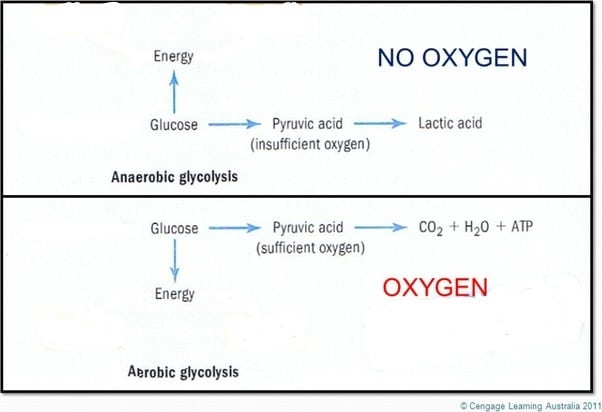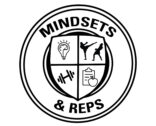Carbohydrates are the most polarizing nutrient in the health industry by far. Some experts advocate high carb intake while others think it will send you to an early grave. Naturally, like most things in life, the answer lies somewhere in the middle and is strongly based on an individual’s circumstances and goals.
But what about building muscle specifically? Are carbs necessary in the muscle building process?
Protein is the only substrate that can build muscle. There is no way in which carbohydrates (or fats for that matter) can build muscle because protein is the only macronutrient which contains nitrogen. In addition, there is no mechanism to convert carbs or fats to protein. A positive nitrogen balance in the body leads to growth and repair of muscle and other tissues.
(Going forward, the words carbs and glucose may be used interchangeably)
Unnecessary Does Not Mean Worthless
A car and cell phone aren’t necessary to live your daily life, but they make things much easier. Just because carbohydrates aren’t directly involved in hypertrophy (muscle growth) doesn’t mean they don’t provide a benefit. Carbs are the preferred energy source for almost all physical exercise. It is the only substrate that can fuel both anaerobic and aerobic activity. Creatine is strictly anaerobic while fats are strictly aerobic.
Despite the ongoing debate over diet in the fitness industry, training is still the primary driver of muscle growth. Since carbs are the preferred source of fuel for your workouts, they play a critical role in the muscle building process even if they themselves cannot elicit growth directly. Consuming carbs pre and post workout can improve your workout performance and aid in recovery. Quality training sessions = long term muscle growth.
The Role of Glycogen
Carbohydrates can be stored in muscle tissue or the liver in the form of glycogen. Carbohydrates contain water (hence carbohydrate) so water will be pulled into the muscle as well. Believe it or not, muscles are about 70-80% water so this can make a tremendous difference on the size and appearance of them.
There is a reason bodybuilders “carb up” the night before a competition. If done properly, a bodybuilder will be able to maintain a low level of body fat whilst simultaneously using carbs to give their muscles a full and dense look. If they don’t carb up enough, their muscles will look flat and unimpressive. Sometimes you will hear competitors say that their physique looked ten times better after consuming a cheat meal when the show was over. The extra carbs (and likely sodium) went right to the muscles that needed it.
Aside from the aesthetic aspect, glycogen serves a purpose as well. When you perform a bicep curl, you will use the glycogen stored in the bicep muscle itself for energy. The reason is rather obvious; the muscle will prefer to use a localized energy source rather than grab glucose circulating the blood. It makes more sense to use energy right in the stimulated muscle rather than have to grab it from elsewhere.
Carbs as an Energy Source
Earlier we alluded to the fact that carbs can fuel both anaerobic and aerobic exercise. Anaerobic exercise is intense, and requires energy to be produced very quickly. Think battle ropes, circuit training, or box jumps without resting. Anaerobic means without oxygen. Glucose is able to generate energy without oxygen, hence why it works so well to fuel anaerobic exercise.

The figure above demonstrates two different scenarios and illustrates what makes carbs/glucose such a unique and great fuel source.
Take a look at the top half of the image and follow the arrows. Imagine you’re competing in an intense sport like amateur wrestling or football. These sports require energy very quickly so glucose will go through anaerobic glycolysis to provide it. Basically what happens is you break a bond in the middle of a glucose molecule to create energy. What you’re left with are two pyruvic acid molecules.
What happens next is interesting. Since the sport is so intense, the pyruvic acid has neither the time nor the oxygen necessary to enter the mitochondria of the muscle cell and create more energy. What results is the formation of lactic acid. When this happens over and over again you get a buildup of lactic acid which leads to that burning sensation you feel in your muscles when you get extremely fatigued (it’s not quite that simple but for the sake of this article it’s all you need to know). It’s not a good or bad thing it’s simply the byproduct of intense exercise. But that initial breakdown of glucose to pyruvic acid is how carbs fuel anaerobic exercise. It happens outside of the mitochondria and requires zero oxygen.
Now look at the bottom half. In this situation we have sufficient oxygen. Either the exercise itself has slowed down or you are in tremendous cardiovascular shape. The initial phase is still the same; we break down glucose into two pyruvic acid molecules. With this level of oxygen however we can “properly” break down this pyruvic acid by shipping it to the mitochondria to create more energy (remember the Krebs cycle in high school science class?). As a result we don’t get that buildup of lactic acid like we did in the previous example. This is how carbs can fuel aerobic exercise. It happens inside the mitochondria and requires oxygen.
If you didn’t get all the details, don’t worry.
(Also, exercise science PhD’s please don’t jump down my throat, I know there’s way more to both processes)
What About Creatine and Fat
The point of the scientific explanation above was to show that glucose can provide energy in ways that creatine and fats cannot. You are probably familiar with creatine as a muscle or strength building supplement. But creatine is actually used to create energy in the body. In fact, it can create energy even faster than carbs can. However, this lasts for mere seconds (think 100 meter dash). While creatine is a great source of energy for maximum output, it just isn’t sustainable. Therefore, it’s not a reliable energy source. As we mentioned earlier, creatine is strictly anaerobic.
Fats can create a tremendous amount of energy. Also, their storage capacity is limitless. You can only store so much glucose in your muscle or liver, but you can get fatter and fatter every day. The problem is that fats require oxygen to create energy. Getting energy from fats is a multi step process and quite slow. Therefore, it can’t keep up with the demands of intense exercise. Again, as we mentioned earlier, fats are strictly aerobic.
Final Notes
- Carbohydrates are a hybrid energy source that can fuel both anaerobic and aerobic exercise in ways that creatine and fats cannot
- While carbs cannot directly build muscle, they can indirectly optimize muscle growth by improving workout performance
- Carbs can be stored in muscle in the form of glycogen, which increases the volume of the muscle cell (though not technically building it)
